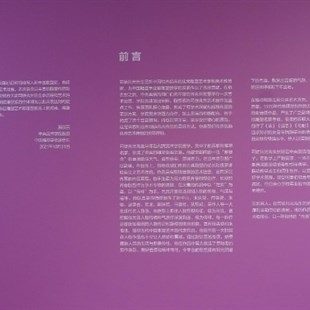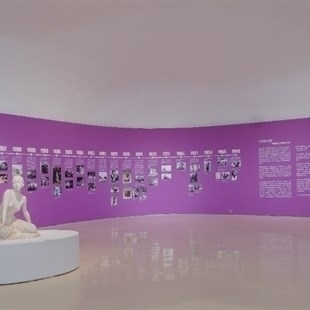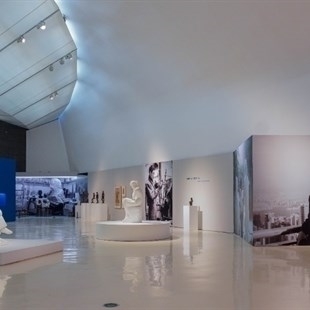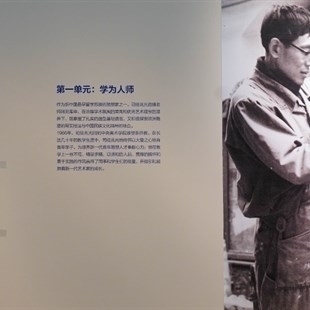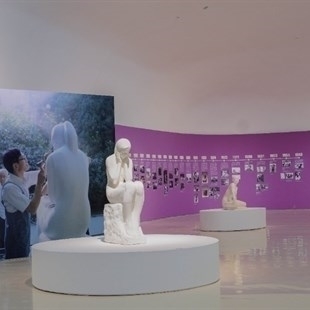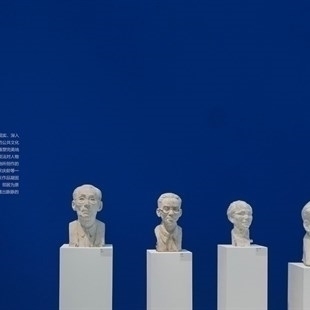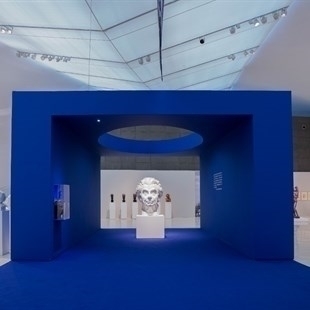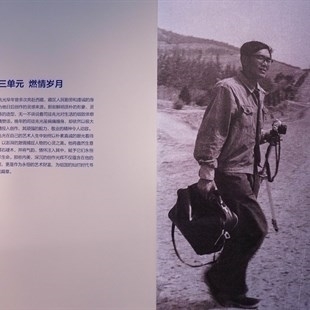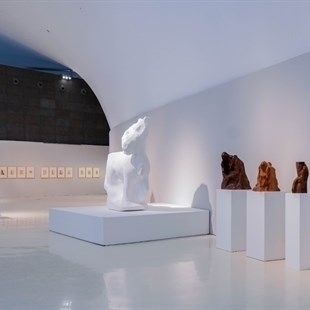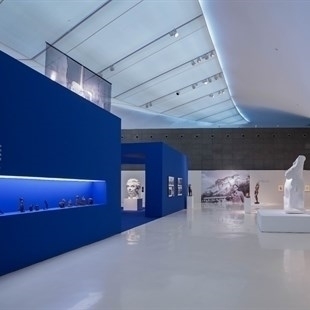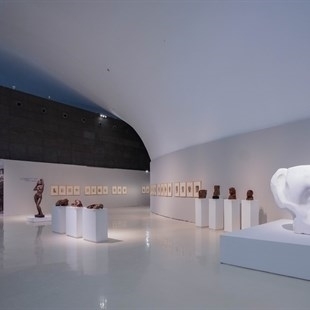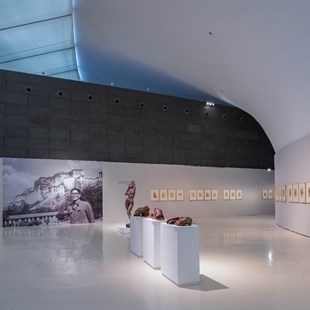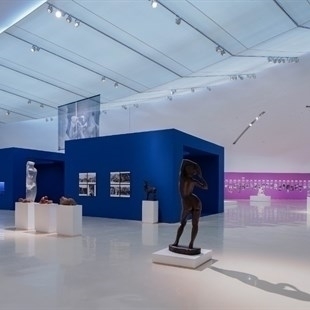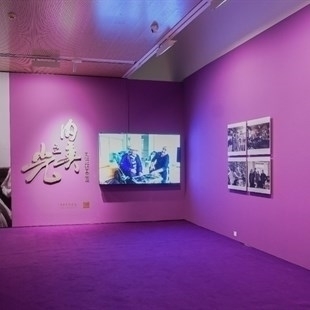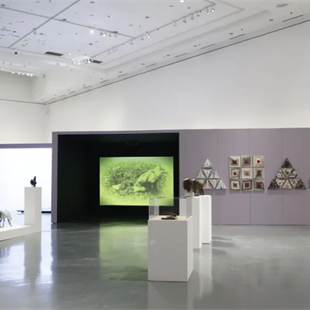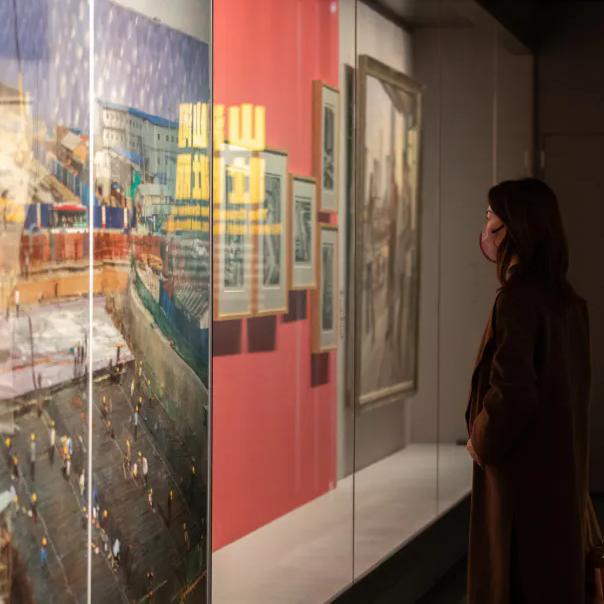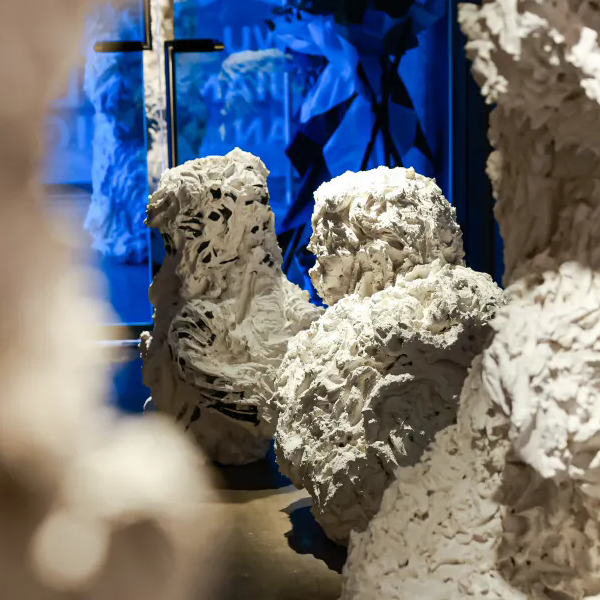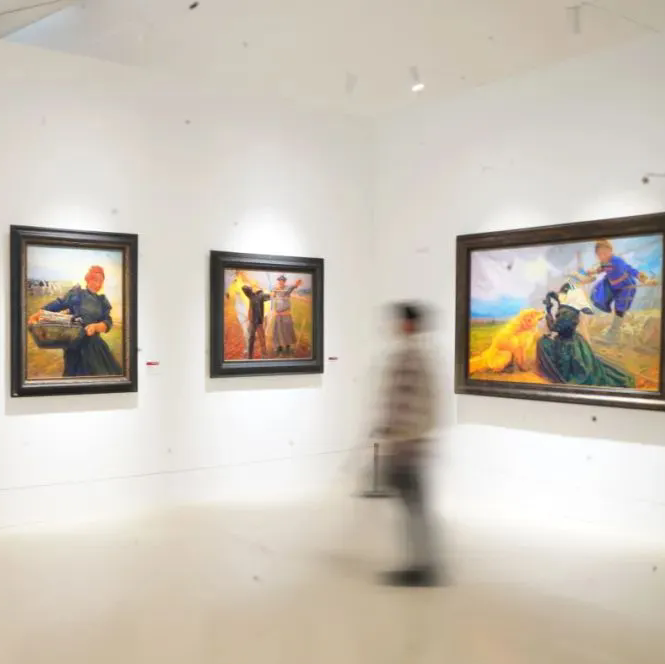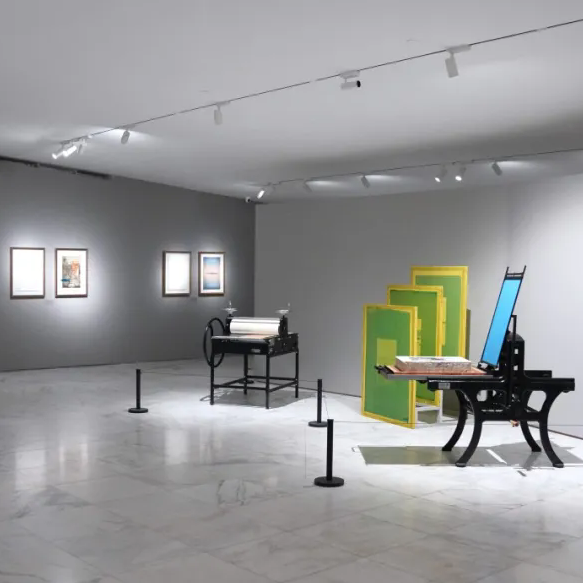
Situ Zhaoguang was born on June 10, 1940 into a Chinese family in Hong Kong. His family was originally from Kaiping City in Guangdong Province. He was enrolled in the Affiliated Middle School of Central Academy of Fine Arts in 1955, and studied at the Department of Sculpture in CAFA from 1959. He was sent to Leningrad in the Soviet Union (now St. Petersburg, Russia) in 1961, and studied under the guidance of Professor Mikhail Anikushin.

Situ Zhaoguang was working on his sculpture of Guanyin.
In 1966, Situ Zhaoguang returned to China, and he began to teach at the Department of Sculpture in CAFA. His signature teaching style was making works together with his students, and offering demonstrations by himself. He attached importance to cultivating the students’ sense of space, and insisted that they “observe subjects stereoscopically,” “with true love towards everything that’s beautiful.” Being a teacher for decades, Situ Zhaoguang had always educated young students whole-heartedly, and devoted himself to training the new generation of sculpture artists. He had always been a perfectionist in teaching so won respect from his students with his modest character, generous heart and brave style.

Students were touring around sculptor Konionkov’s studio. From left to right: Feng Zhen, Cao Chunsheng, Konionkov, Situ Zhaoguang, Zhang Huaqing, Wang Keping, Su Gaoli

Situ Zhaoguang returned to China from the Soviet Union in 1966, and created the sculpture of Mao Zedong for the Beijing Institute of Technology.

Situ Zhaoguang was working at the sculpture studio in CAFA in 1984-85.
 Situ Zhaoguang demonstrated painting methods for his students.
Situ Zhaoguang demonstrated painting methods for his students.
In the spring of 1974, Situ Zhaoguang was commissioned by the Ministry of Culture to go to Tibet with other sculptors from the CAFA Department of Sculpture, including Wang Keping, Cao Chunsheng, Zhao Ruiying, Zhang Dedi, Zhang Dehua, Shi Yi, Guan Jing, Hao Jingping, Li Deli, and created the large-scale clay sculpture “Anger of Serfs”. In 1978, Situ was again sent to Tibet by the National Ethnic Affairs Committee, to collect material and prepare for the replication of the “Anger of Serfs” in the Cultural Palace of Nationalities in Beijing. He painted a great number of sketches of Tibetan life and portraits during that time.

Group photo taken in 1976 shows sculptors including Wang Keping, Cao Chunsheng, Zhang Deli, Zhang Dehua, Situ Zhaoguang, Guan Jing, Zhao Ruiying, Hao Jingping, Shi Yi, Li Deli, Duo Jila, Yang Weiming, Ali, Guo Linxin, Tu Sihua, and the then director of the Tibet Revolution Exhibition Hall Xue Yilou, and consultant Zhol Khang Thub Bstan Nyi Ma.

Situ Zhaoguang engaged in field work in Tibet in 1974-75.

Situ Zhaoguang revisited Tibet in 1978.
One of the pioneers of the New China’s urban sculpture, Situ Zhaoguang and his peers who also advocated for building sculptures in urban space went to cities like Moscow and Leningrad to study their sculpture. After he returned to China, he created masterpieces such as “Reading”, “Reverie” and “Bursting”, which are seen as the highlights of urban sculpture in China. Situ also made a clear observation of the urban sculpture of his time. He put forward the idea of “Better less than poor-quality,” which was also a reflection of his creative attitude.
In 1997, after much hard work, Situ Zhaoguang fell ill, and was diagnosed with Parkinson’s disease. Although suffering from chronic illness, he still carried on creating sculptures for famous people such as He Xiangning, Sun Zhongshan, Wu Zuoren and Liang Sicheng. Situ Zhaoguang had always portrayed his subjects as serious and never found it a bother to repeatedly polish his work. The sculpture he made of famous people were as timeless as the people’s biographies, with an essence of life flowing beneath the stiff surface of stones and rocks.
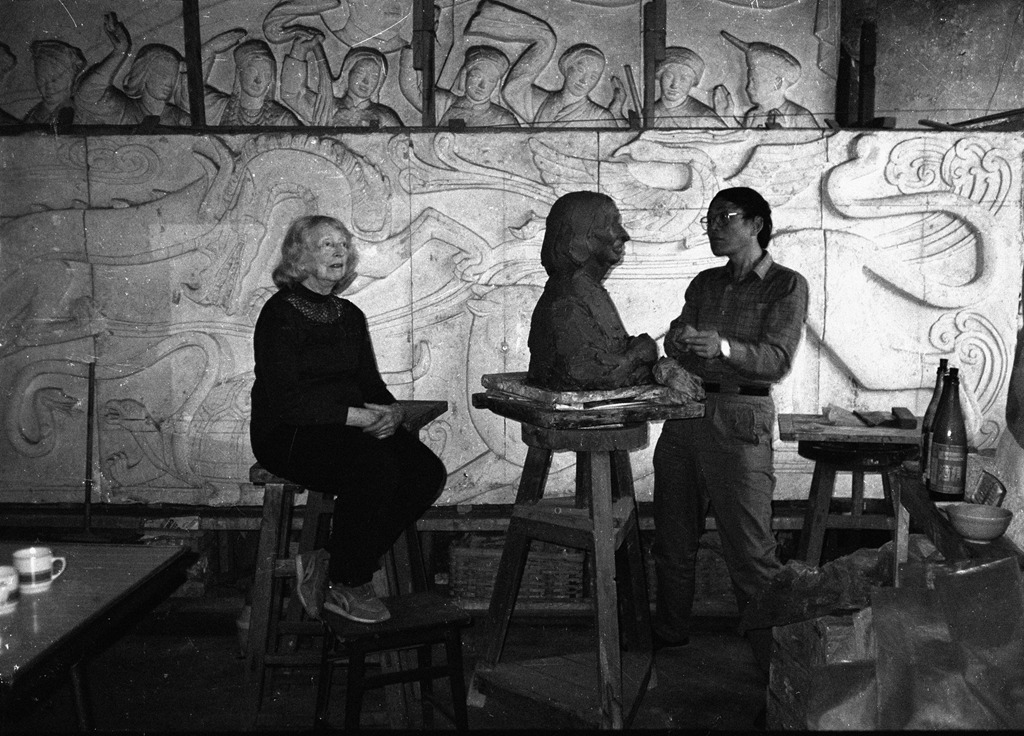
Situ Zhaoguang created a sculpture of Rene Wang.

Situ Zhaoguang was making a sculpture of Wu Zuoren, while Mr. Wu and his wife Xiao Shufang watched the process behind him.

Situ Zhaoguang created a sculpture of Liang Sicheng despite his illness.
Situ Zhaoguang had always observed the world through simple, pure eyes, and captured the inner beauty of the subjects with passion. He sculpted liveliness into stones and wood, along with the aura of the subjects and his loving care for the subjects, so that the subjects live forever in the sculpture. The beauty of his creativity does not only exist in his work, but it also created a great paragraph for the splendid era of the new China.
As Prof. Yin Shuangxi who is Vice President of the China Sculpture Society states Situ Zhaoguang was such an excellent sculpture educator that he used to work as the Deputy Director of the Department of Sculpture at CAFA for eight years. He treated his students like relatives and educated them with great love. In his strict cultivation of realistic sculpture, he attached great importance to the texture changes so as to portray the artist’s psychology and emotions more appropriately. His sketches of figures combine the rigor of European sketches with a lively vividness, while incorporating the rich expressions of subjects for sketches.
Situ Zhaoguang’s figure sculptures pursue the beauty of purity and silent human nature, and he endows the figures with a pure expression of inner beauty. He consciously explores a combination of realistic modeling of European sculpture and the mentality of Chinese national culture. He found the beauty of lines of Chinese art from the contours and dynamics of the figure sculptures, as well as an inner beauty that was represented by Chinese calligraphy in the traces and textures of them. With concise and generalized characteristics, his sculptures convey the rich mentality of Chinese art and he has made outstanding contributions to the exploration in the nationalization of Chinese art. Prof. Situ Zhaoguang passed away in Beijing at the age of 80.
The contribution that Situ Zhaoguang made to Chinese sculpture has been clearly written in the history of new Chinese sculpture and it has become the permanent artistic wealth of CAFA. With a wealth of sculptures and documents, this exhibition showcases the life course and artistic pursuit of Situ Zhaoguang. This exhibition is created with deep condolence for Prof. Situ Zhaoguang from all the staff members and students from Department of Sculpture at CAFA, hopefully this exhibition will inspire young sculptors to keep moving towards the future.
About the exhibition
Dates: 8 November - 12 December, 2021
Organizer: Central Academy of Fine Arts
Undertaker: Department of Sculpture, CAFA
Co-organizer: CAFA Art Museum
Supporting Organizations: Beijing Yidong Lianchcuang Public Art Co., Ltd. Beijing Yichaomeiyuan Environmental Art Design Co., Ltd.
Academic Consultant: Fan Di’an
Curator: Yin Shuangxi
Executive Curator: Duan Haikang
Exhibition Design: Ma Huayuan Situ Xiaochun
Exhibition Organizer: Zhang Wei, Hu Quanchun, Jing Tingting, Mao Yuan, Gao Gao, Zhou Hongbing, Ma Liang
Courtesy of CAFA Art Museum, edited by CAFA ART INFO.


